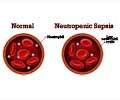Non-invasive imaging tests are revolutionizing sepsis care with earlier detection.

Sepsis - Symptoms & causes
Go to source) detection.
What is Sepsis
Sepsis is a dysregulated response to infection that can result in life-threatening organ failure if treatment is delayed. Often clinicians lack methods for early detection of the life-threatening emergency which claims millions of lives globally each year.New Scan Could Detect Sepsis Early
“The study suggests that while the brain is partly protected in early sepsis, the skeletal muscle could be an early target for detecting changes in microhemodynamics,” said the team in the paper published in The FASEB Journal. Currently, sepsis is managed by early administration of antibiotics and vasopressors. These medications help manage the infection and systemic hypotension (low blood pressure) and help increase the survival rate. However, there is currently a lack of tools that are sensitive to the onset of sepsis to recognise the condition and triage patients for early intervention.Thus, there is a global need for accessible technology (i.e., non-invasive, preferably frugal, point-of-care) to guide early sepsis identification and intervention, said the team. In the study, the team used imaging methods -- called hyperspectral near-infrared spectroscopy and diffuse correlation spectroscopy -- commonly used at the bedside to monitor tissue conditions.
To probe the efficacy of the imaging techniques, the team conducted experiments in rodents.Together the imaging methods picked up signs of sepsis in the skeletal muscle microcirculation. They could detect it even before vital organs like the brain had been affected.
“Sepsis is a leading cause of death around the world that disproportionately affects vulnerable populations and those in low-resource settings,” said co-corresponding author Rasa Eskandari, doctoral candidate at Western University.“Since early recognition can significantly improve outcomes and save lives, our team is committed to developing accessible technology for early sepsis detection and to guide timely interventions,” Eskandari added. Investigators next plan to test the combination technique’s ability to monitor microcirculatory function in patients in intensive care.
Reference:
- Sepsis - Symptoms & causes - (https://www.mayoclinic.org/diseases-conditions/sepsis/symptoms-causes/syc-20351214)









